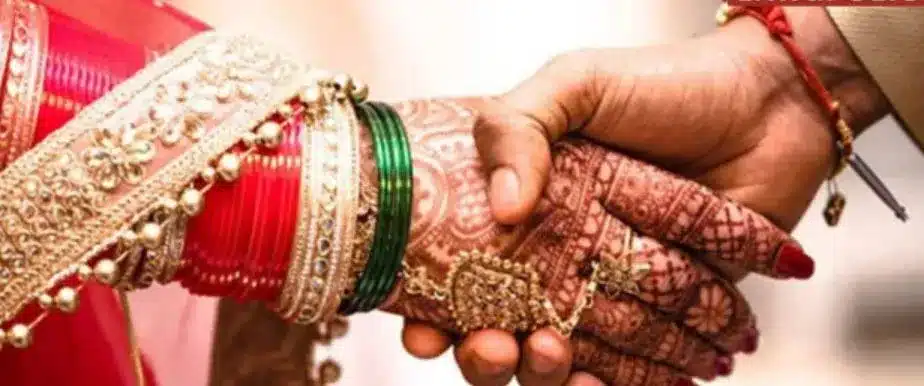What’s in today’s article?
- Why in News?
- Debate surrounding the minimum age for marriage for girls
- Himachal bill to raise women’s marriage age
- Legislative Process and Constitutional Implications of Himachal Pradesh’s Marriage Age Bill
Why in News?
The Himachal Pradesh Assembly has passed the Prohibition of Child Marriage (Himachal Pradesh Amendment) Bill, 2024. The Bill proposed to raise the minimum age of marriage for women from 18 to 21 years.
In order to do so, the bill amended the Prohibition of Child Marriage (PCM) Act, which was passed by Parliament in 2006.
Debate surrounding the minimum age for marriage for girls
- The demand to raise the minimum age for marriage for girls to 21 in India has been growing due to several social, economic, and health-related factors:
- Gender Equality and Education
- Higher Education: Raising the marriage age allows girls more time to complete their education. This will improve their career prospects.
- Empowerment: Delaying marriage can help empower women by giving them more time to develop skills and become financially independent.
- Health and Well-being
- Maternal Health: Early marriage often leads to early pregnancies, which are associated with higher risks of maternal and infant mortality.
- Raising the marriage age allows girls to attain physical and emotional maturity, leading to safer pregnancies and better health outcomes for both mothers and children.
- Child Development: Delaying motherhood gives women the opportunity to provide better care and nurturing to their children.
- They are more likely to be emotionally and economically prepared.
- Reducing Child Marriage
- Combatting Child Marriage: Child marriage is still prevalent in some parts of India, leading to various social issues such as domestic violence, lack of education, and poverty.
- Economic Development
- Workforce Participation: Delaying marriage can increase women’s participation in the workforce, which contributes to economic development.
- Key challenges
- Different age for attaining majority and being allowed to marry
- The Bill increases the minimum age of marriage for females to 21 years, bringing it on par with that for males.
- However, the age of attaining majority is 18 years under the Majority Act, 1875.
- This difference may have consequences regarding the rights and responsibilities of persons between 18 and 21 years of age.
- Different age for attaining majority and being allowed to marry
- Inconsistencies between the minimum age for marriage and various SC Judgements
- In 2018, the SC said that right to marry is part of right to life under Article 21 of the Constitution.
- In another case in 2018, the Court held that when two adults consensually choose each other as life partners, it is a manifestation of their choice.
- This choice is recognised under Articles 19 and 21 of the Constitution.
- The current Bill restricts the right to marry before the age of 21 years.
- Hence it raises question about the reasonableness of restriction for those between the ages of 18 and 21 years.
- For any restriction of fundamental rights by law, there needs to be three criteria.
- These are: a public purpose, the restriction having a nexus with such purpose, and absence of a less intrusive way to achieve the purpose.
- Implementation challenges
- There has been limited success in curbing marriage of girls below the age of 18 years.
- In 2020, only 785 cases were registered under the 2006 act highlighting the fact that the detection of such marriages remains low.
- This raises the question of whether the increase in the minimum age would have any significant impact in reducing child marriages.
Himachal bill to raise women’s marriage age
- The Himachal Pradesh Bill amends the Prohibition of Child Marriage (PCM) Act by raising the minimum marriage age for both males and females to 21 years, eliminating the previous age distinction.
- The Bill defines a “child” as anyone under 21, regardless of gender, and gives this new age limit overriding authority over any other law or cultural practice that might permit earlier marriage.
- Additionally, it extends the time frame for filing a petition to annul a child marriage, allowing individuals to do so within five years of reaching the age of majority, giving them until the age of 23 to annul the marriage.
Legislative Process and Constitutional Implications of Himachal Pradesh’s Marriage Age Bill
- The Himachal Pradesh Bill seeks to amend the Prohibition of Child Marriage (PCM) Act by raising the minimum marriage age for women to 21 years, conflicting with the central law that sets it at 18.
- Since marriage is a subject under the Concurrent List, both the central and state governments can legislate on it.
- However, when a state law contradicts a central law, Article 254(1) of the Constitution renders the conflicting part of the state law void unless the President gives assent under Article 254(2).
- The Bill must therefore be reserved for President’s consideration by the Governor of Himachal Pradesh.
- The President’s assent is necessary for the Bill to become law, similar to the process seen with Uttarakhand’s Uniform Civil Code (UCC) Bill.
Q.1. Why did Himachal Pradesh raise the minimum marriage age for women?
Himachal Pradesh raised the minimum marriage age for women to 21 to promote gender equality, improve health outcomes, and support women’s education and career opportunities.
Q.2. What are the legal implications of the Himachal Pradesh marriage age Bill?
The Bill conflicts with central law, requiring presidential assent under Article 254(2) to be valid, making it a crucial step in legal and constitutional terms.
Source: Himachal Bill raises women’s marriage age; what happens next? | Indian Express | The Hindu
Last updated on June, 2025
→ UPSC Notification 2025 was released on 22nd January 2025.
→ UPSC Prelims Result 2025 is out now for the CSE held on 25 May 2025.
→ UPSC Prelims Question Paper 2025 and Unofficial Prelims Answer Key 2025 are available now.
→ UPSC Calendar 2026 is released on 15th May, 2025.
→ The UPSC Vacancy 2025 were released 1129, out of which 979 were for UPSC CSE and remaining 150 are for UPSC IFoS.
→ UPSC Mains 2025 will be conducted on 22nd August 2025.
→ UPSC Prelims 2026 will be conducted on 24th May, 2026 & UPSC Mains 2026 will be conducted on 21st August 2026.
→ The UPSC Selection Process is of 3 stages-Prelims, Mains and Interview.
→ UPSC Result 2024 is released with latest UPSC Marksheet 2024. Check Now!
→ UPSC Toppers List 2024 is released now. Shakti Dubey is UPSC AIR 1 2024 Topper.
→ Also check Best IAS Coaching in Delhi













